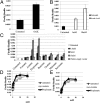Olfactory receptor responding to gut microbiota-derived signals plays a role in renin secretion and blood pressure regulation
- PMID: 23401498
- PMCID: PMC3600440
- DOI: 10.1073/pnas.1215927110
Olfactory receptor responding to gut microbiota-derived signals plays a role in renin secretion and blood pressure regulation
Abstract
Olfactory receptors are G protein-coupled receptors that mediate olfactory chemosensation and serve as chemosensors in other tissues. We find that Olfr78, an olfactory receptor expressed in the kidney, responds to short chain fatty acids (SCFAs). Olfr78 is expressed in the renal juxtaglomerular apparatus, where it mediates renin secretion in response to SCFAs. In addition, both Olfr78 and G protein-coupled receptor 41 (Gpr41), another SCFA receptor, are expressed in smooth muscle cells of small resistance vessels. Propionate, a SCFA shown to induce vasodilation ex vivo, produces an acute hypotensive response in wild-type mice. This effect is differentially modulated by disruption of Olfr78 and Gpr41 expression. SCFAs are end products of fermentation by the gut microbiota and are absorbed into the circulation. Antibiotic treatment reduces the biomass of the gut microbiota and elevates blood pressure in Olfr78 knockout mice. We conclude that SCFAs produced by the gut microbiota modulate blood pressure via Olfr78 and Gpr41.
Conflict of interest statement
The authors declare no conflict of interest.
Figures





References
Publication types
MeSH terms
Substances
Grants and funding
LinkOut - more resources
Full Text Sources
Other Literature Sources
Molecular Biology Databases

